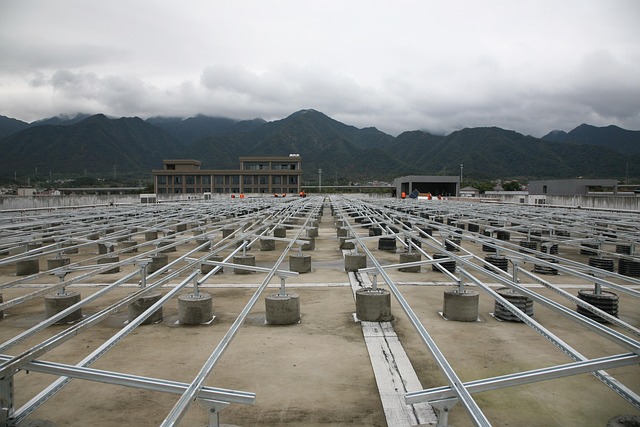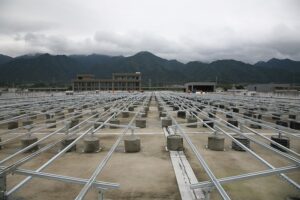
From Sunlight to Wind: The Journey of Clean Energy
In an era where climate change stands as a significant threat to our planet, the shift towards cleaner, renewable energy is not just beneficial; it is essential. The world is evolving from a reliance on fossil fuels to a more sustainable approach that includes solar, wind, and other renewable resources. This article explores the journey of clean energy—from sunlight harnessed by solar panels to the winds that turn massive turbines.
The Rise of Solar Energy
Solar energy is one of the most potent forces in the clean energy landscape. The journey of solar energy begins with the sun, which emits approximately 173,000 terawatts of energy continuously, more than 10,000 times the world’s total energy use. The technology behind solar energy has evolved significantly, leading to a substantial reduction in costs and an increase in efficiency.
Photovoltaic cells, which convert sunlight directly into electricity, are at the heart of solar energy technology. These cells are made of semiconductor materials that exhibit a photovoltaic effect, allowing them to convert light into electrical energy. Over the years, research and development have led to the creation of more efficient solar panels, improving their capacity to convert sunlight into usable energy.
Harnessing Solar Power
Once solar panels capture sunlight, the energy is transformed into electricity, which can be used immediately or stored for later. This process is often facilitated by solar inverters, which convert the direct current (DC) generated by the panels into alternating current (AC), making it usable for homes and businesses.
Solar power is not limited to large solar farms; it can also be harnessed on modest scales, such as rooftop installations, small home systems, and solar water heaters. In places with abundant sunlight, solar energy systems can significantly reduce dependence on conventional energy sources, leading to lower energy bills and reduced greenhouse gas emissions.
The Transition to Wind Energy
Wind energy, another significant player in the clean energy arena, operates on a different principle than solar. Wind turbines convert the kinetic energy of moving air into mechanical power, which can then be changed into electricity. The development of larger, more efficient turbines has enabled a shift to large-scale wind farms that can produce significant amounts of electricity.
The journey of wind energy begins with the natural movement of air caused by temperature differences between the Earth’s surface and the atmosphere. As air warms, it rises, and cooler air rushes in to fill the void. This process creates the winds that we harness for energy. Contemporary wind turbines are designed to operate efficiently in varying wind conditions, making them viable in numerous geographic areas.
The Mechanics of Wind Energy
A wind turbine consists of several key components: blades, a rotor, a nacelle (which houses the generator and other components), and a tower. As the wind blows, it causes the blades to spin, turning the rotor. This mechanical energy is then converted into electricity by the generator inside the nacelle.
Wind farms can be located onshore (land-based) or offshore (in oceans and large lakes). Offshore wind farms are typically more efficient due to stronger and more consistent winds, while onshore farms are more easily accessible for maintenance and construction. The expansion of wind energy has been remarkable, with countries around the globe investing heavily in wind technology to achieve their renewable energy targets.
Hybrid Energy Systems
Combining different renewable energy sources leads to hybrid energy systems that optimize energy production while ensuring reliability and efficiency. For instance, solar and wind energy can complement each other. Solar panels often generate more electricity during the day, while wind turbines can produce energy at night and during seasons when sunlight is less abundant.
Hybrid systems can integrate battery storage to store excess energy generated during peak production times. This is crucial as it allows for a continuous energy supply even when generation decreases. Battery storage technologies are improving rapidly, making renewable energy systems more reliable and facilitating greater use of renewables in our energy mix.
The Role of Policy and Government
Government policies play a pivotal role in facilitating the growth of clean energy. Initiatives such as tax credits, subsidies, and renewable energy mandates incentivize investments in solar and wind technologies. Moreover, international agreements like the Paris Agreement push countries to commit to greener energy practices and to set ambitious clean energy targets.
As awareness of climate change grows, many nations are implementing legislation to reduce carbon emissions and transition to greener energy sources. This has spurred innovation in clean energy technology, creating jobs, driving economic growth, and fostering a sustainable future.
The Challenges Ahead
Despite the rapid advancements in solar and wind technology, challenges remain. One prominent issue is the intermittent nature of renewable sources; energy production from both solar and wind can fluctuate based on weather conditions. Addressing this challenge requires improved energy storage solutions and better grid management to balance supply and demand.
Additionally, integrating renewable energy into existing grids can be complex, necessitating upgrades and innovations in electricity infrastructure. Furthermore, public acceptance and environmental concerns regarding land use and visual impacts of large-scale installations must be navigated to promote widespread adoption.
The Future of Clean Energy
The future of clean energy lies in continued innovation and collaboration. As technology progresses, we can expect further advancements in energy efficiency, storage, and smart grid systems, which will enhance the reliability and accessibility of clean energy.
Additionally, emerging technologies such as green hydrogen and wave energy present exciting opportunities for diversifying the renewable energy portfolio. Green hydrogen, produced using renewable electricity, can serve as a potentially uncapped energy storage solution, while wave energy offers vast untapped potential from the world’s oceans.
Conclusion
The journey from sunlight to wind epitomizes the ongoing revolution in clean energy. As the world increasingly recognizes the urgent need for sustainable solutions, the transition to renewables represents not just a chance for energy independence but a pathway to a healthier planet. By harnessing the power of the sun and the wind, we are contributing to a future that prioritizes ecological balance, economic growth, and social progress.
As individuals, communities, and nations embrace the shift towards cleaner energy, we move closer to a world where our dependence on fossil fuels is diminished, and sustainability is at the forefront of our energy choices.



